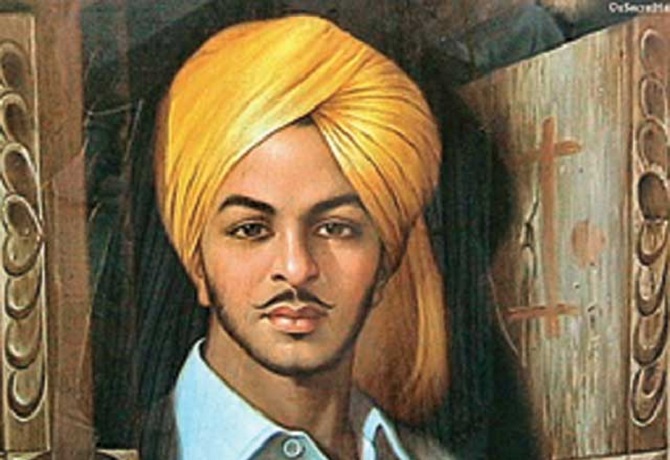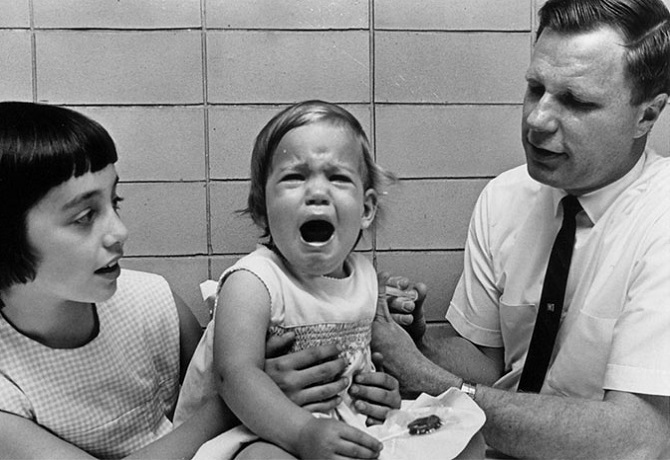Bhagat Singh, born 28th September, 1907, was an Indian socialist revolutionary remembered for two dramatic acts- 1929 Assembly incident and execution at age 23- that made him not just a folk hero of the Indian independence movement, but an immortal son of India.
Bhagat Singh attended Dayanand Anglo Vedic High School, which was operated by Arya Samaj, and then National College, both located in Lahore. His family members were Hindus and Sikhs; some had been active in Indian Independence movements, others had served in Maharaja Ranjit Singh’s army.
In 1919, when he was 12 years old, Singh visited the site of the Jallianwala Bagh massacre hours after thousands of unarmed people gathered at a public meeting had been killed. When he was 14 years old, he was among those in his village who welcomed protesters against the killing of a large number of unarmed people at Gurudwara Nankana Sahib on 20 February 1921. Bhagat Singh became disillusioned with Mahatma Gandhi’s philosophy of non-violence after he called off the non-co-operation movement. Gandhi’s decision followed the violent murders of policemen by villagers who were reacting to the police killing three villagers in the 1922 Chauri Chaura incident. Bhagat Singh joined the Young Revolutionary Movement and began to advocate for the violent overthrow of the British Government in India.
Inspired by the Young Italy movement of Giuseppe Mazzini, he founded the Indian socialist youth organisation Naujawan Bharat Sabha in March 1926. He also joined the Hindustan Republican Association, which had prominent leaders, such as Chandrashekhar Azad, Ram Prasad Bismil and Shahid Ashfaqallah Khan. A year later, to avoid an arranged marriage, Singh ran away to Cawnpore. In a letter he left behind, he said, “My life has been dedicated to the noblest cause, that of the freedom of the country. Therefore, there is no rest or worldly desire that can lure me now.”
In December 1928, Bhagat Singh and an associate, Shivaram Rajguru, fatally shot a 21-year-old British police officer, John Saunders, in Lahore, British India, mistaking Saunders, who was still on probation, for the British police superintendent, James Scott, whom they had intended to assassinate. They believed Scott was responsible for the death of popular Indian nationalist leader Lala Lajpat Rai, by having ordered a lathi charge in which Rai was injured, and, two weeks after which, died of a heart attack. Saunders was felled by a single shot from Rajguru, a marksman.
After escaping, Bhagat Singh and his associates, using pseudonyms, publicly owned to avenging Lajpat Rai’s death. Singh was thereafter on the run for many months, and no convictions resulted at the time. Surfacing again in April 1929, he and another associate, Batukeshwar Dutt, exploded two improvised bombs inside the Central Legislative Assembly in Delhi. They showered leaflets from the gallery on the legislators below, shouted slogans, and then allowed the authorities to arrest them. The arrest, and the resulting publicity, had the effect of bringing to light Singh’s complicity in the John Saunders case. Awaiting trial, Singh gained much public sympathy after he joined fellow defendant Jatin Das in a hunger strike, demanding better prison conditions for Indian prisoners, and ending in Das’s death from starvation in September 1929.
Bhagat Singh was convicted and hanged in March 1931, aged 23. It enraged the entire India and strengthened the movement against the British Raj.



